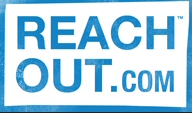
 |
|||
|
Treasured for centuries by karate's top masters, The Bubishi is a classic Chinese text on philosophy, strategy, medicine, and technique as they relate to the martial arts. Referred to as 'the bible of karate' by the famous master Miyagi Chojun, for hundreds of years The Bubishi was a secret text passed from master to student in China and later in Okinawa. All of karate's legendary masters have studied it, applied its teaching or copied passages from it. No other classic work has had as dramatic an impact on the shaping and development of karate as The Bubishi. - Patric McCarthy, "The Bible of Karate: Bubishi" The following articles were written by Hanshi Kenshu Watanabe on the Bubishi.
The BubishiThe Bubishi is an ancient Chinese martial art book. It literally means "martial-equipped intention or spirit". It contains the origin of the White Crane style and its teaching, instructions in techniques, vital point charts, Chinese medicine and martial art strategy. It was preserved at a temple in Naha, Okinawa. It is said that it was brought from Fujian, China, to Okinawa by a Chinese settler or through a cultural exchange between two countries several hundred years ago.
The Bubishi TradtionAll over the world today - particularly in Australia and Japan - there are many practitioners of Goju-Ryu Karate. When I came to Australia in 1977 I found that Goju-Ryu was already very popular, and Mr Gogen Yamaguchi’s style had spread Australia wide in preference to many other Goju-Ryu style practised in Japan and Okinawa.
A tradition of Bubishi degree still exists among the traditional Goju-Ryu masters, In my case , for example, I am a fifth generation Goju-Ryu Bubishi holder. From the founder Miyagi to Higa , to Izumikawa, to Ichikawa, to Sudo and then to me, Watanabe, The first three masters have passed away, so our headmaster is Mr Ichikawa, who now lives in Tokyo.1 Through my observation in the past, I see most Goju-Ryu instructors in Australia and overseas, still practise the hard style of Goju-Ryu, perhaps because they are young and strong, or simply because they just don’t practise the soft style. Actually, the hard style of Goju-ryu is much easier than the soft style. Usually a soft Goju-Ryu comes after some 10 years or so of training hard-style Goju-Ryu. For example: Use the sharp offensive and tenacious defensive techniques like a Japanese sword, spring, whip, tentacles, manta ray, and cottonwool. To classify soft Goju-Ryu are "whip" (called Muchi-te or whipping). "tentacle" (toko-te or adherence). "manta ray" (hobaku-te or envelope) and "cottonwool" (watano-te or yielding).
According to Bubishi, every technique is a combination of the hard and the soft. or inhalation and exhalation. The founder, Chojun Miyagi, found the above phrase from the Bubishi, then he named his Karate as Goju-Ryu. This was in 1936. Goju-Ryu is only 48 years old from the founder, and still needs to be practised and refined by the real practitioners from generation to generation. I would like to pursue the way of Goju-Ryu for the rest of my life in Australia and look forward to someone following the tradition of Goju-ryu Karate, When the day comes, I would like to give him or her a Bubishi Degree, to prove that they are traditional Goju-Ryu practitioners.
1. Mr Ichikawa passed away in March 2005
|
|||
West Australian Goju Ryu Karate Do are proud supporters of Reach Out Youth Services
|
